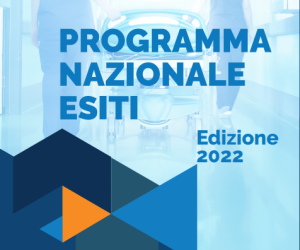The new report on the performance of NHS structures in 2021 shows us that hospitals are trying to recover after the slowdown caused by the pandemic even if we are still far from the previous levels: lost in two years, 2020 and 2021, 2 million and 900 thousand hospitalizations. But it should also be noted that, thanks to corrections applied in various specialist areas, many realities in the Centre-South have surpassed the traditional excellences of the north. An intervention analysis methodology that bodes well.
National Outcomes Program 2022
The National Outcomes Program (PNE) developed
“Il PNE ha evidenziato i principali elementi da considerare per sostenere la riorganizzazione del SSN dopo la pandemia e per contribuire alla diffusione delle buone prassi esistenti e orientare il cambiamento. L’opportunità offerta dal Piano Nazionale di Ripresa e Resilienza richiede uno sforzo programmatorio di ampio respiro in cui le Regioni e le singole strutture sono chiamate a svolgere un ruolo concreto. Per impiegare in maniera ottimale le risorse stanziate in attuazione del PNRR, occorre una riorganizzazione della offerta sanitaria in grado di realizzare un sistema che dia risposte puntuali ai bisogni di prevenzione e di assistenza della popolazione. Tale strada – aggiunge Mantoan – can only be pursued through a concrete synergy between the various levels of governance of the system”
The first edition of the PNE dates back to ten years ago e da allora gli indicatori che il Programma utilizza sono stati in costante aggiornamento e sviluppo, proprio nell’ottica di rispondere in maniera puntuale ai cambiamenti in atto nell’ambito del SSN. Nel 2012 gli indicatori erano 42, nel 2020 sono passati a 177, oggi sono arrivati a 194: 171 relativi all’assistenza ospedaliera (73 di esito/processo, 83 di volume di attività e 15 di ospedalizzazione), 23 relativi all’assistenza territoriale (valutata indirettamente in termini di ospedalizzazione evitabile -14 indicatori- esiti a lungo termine -5 indicatori- e accessi impropri in pronto soccorso – 4 indicatori).
Even if it will not fail to be presented in this way by the media, the PNE does not produce rankings, rankings, judgements. “Le evidenze scientifiche e i risultati forniti dal PNE – sostiene Enrico Coscioni, President of AGENAS – confermano come la pubblicazione dei dati di esito sia uno strumento fondamentale di governo del sistema per migliorare la qualità delle cure, intervenendo su criticità assistenziali ed evitando il ripetersi delle problematiche, al fine di valutare appieno il percorso di cura dei pazienti, rendere le misure più puntuali e individuare con migliore precisione le strutture più virtuose, da prendere come benchmark per il miglioramento“.
L’annuncio è quello dell’avvio di un nuovo Evaluation program of strategic directions: under the magnifying glass the performance of managers, administrative and health directors of the individual Health Trusts. The 200 managers who manage the money of the Italian Healthcare.
“Gli indicatori utilizzati sono stati definiti allo scopo di mostrare ai vari stakeholders – continues Coscioni - what results can be achieved and what are the difficulties of the system through the comparative evaluation between the structures and the territorial areas.
Oggi si guarda primariamente alle 1.377 aziende ospedaliere pubbliche e private, perchè l’hospital is the most established setting, ma indubbiamente in prospettiva dovrà affinarsi maggiormente l’analisi sui livelli di assistenza che si producono a livello del territorio, non più valutato solo per le ospedalizzazioni evitate.
Allo stesso modo si sta consolidando l’attenzione al capitolo delle diseguaglianze nell’assistenza sanitaria, in particular those of gender and those relating to the foreign population residing in Italy.
The photograph that the PNE 2022 gives us is that of a NHS that is trying to make up for lost time due to the pandemic, but is struggling to get back to previous levels and take note of the limitations that have emerged.
Prioritarie sono la necessità d’intervento sulle waiting lists created with the pandemic, almost 3 million hospitalizations accumulated in the years 2020-2021, and on territorial disparities, not only inter-regional but also intra-regional.
The four main directions of evaluation:
- the volumes, surgical indicators calculated by institution, single operator and coherent operating unit
- timeliness access to urgent treatments (coronary angioplasty, hip fracture surgery)
- the appropriateness clinical and organizational in the perinatal area and in short cycle surgery;
- the results: clinical parameters to measure the severity of the patient on admission.
In general, the number of urgent hospitalizations was lower than the expected value based on prepandemic trends: -10% for acute myocardial infarction (about 11,300 fewer hospitalizations) and -6% for hip fracture (about 5,800 fewer hospitalizations).
The timeliness of access to urgent treatments remains below the standard of care in over half of the Italian facilities: the proportion of patients undergoing coronary angioplasty (PTCA) within 90 minutes of admission was on average 50.6%, while the proportion of elderly patients with within 48 hours it averaged 48.6%. In both cases, the threshold established by Ministerial Decree 70 is 60%.
Mortality 30 days after a heart attack it decreased slightly in 2021 compared to 2020 (7.7% vs. 8.4%), with a return to the pre-pandemic trend (expected value equal to 7.3%). Mortality 30 days after hospitalization for hip fracture remained stable compared to 2020 (6.4% vs. 6.6%), but is still higher than in the prepandemic period (5.1% in 2019). In the case of heart attacks, the use of additional clinical variables made it possible to significantly modify the ranking of the structures in half of the 357 evaluated for this indicator.
One remains marked inappropriateness in the mother-child environment, for example in the use of caesarean section: in 2021, only 14.1% of maternities with less than 1,000 deliveries/year and 69.7% of those with volumes greater than 1,000 recorded proportions in line with DM 70. Yes they also maintain low proportions of vaginal deliveries after a previous cesarean, with a national median value of 6.7% and a marked North-South gradient.
Oncological care recorded important signs of recovery in 2021. For example, hospitalizations for breast cancer, which in 2020 had decreased by 11% (about 6,000 operations less than expected), have returned to prepandemic levels. As regards the concentration of cases, the 74% of the interventions was carried out in operating units that complied with the threshold set by Ministerial Decree 70 (up compared to the 67% of 2020). If we consider the volume per operator, the share of interventions carried out by expert operators (≥50 interventions/year) is equal to 70%.
Clinical impact of COVID-19 in patients with AMI
Research activity that demonstrates how the PNE, in addition to being a tool for monitoring the quality of health care, also represents an important source of data to be used to describe and interpret the impact on the NHS of anomalous and sudden phenomena, such as in this case the COVID-19 pandemic.
Objective to evaluate the impact of the injection from COVID-19 on the mortality of patients with AMI hospitalized between 11 March and 3 May 2020 (lockdown), compared with equivalent periods of the previous 5 years.
Outcomes: 30-day and 6-month mortality.
Patients with IMA-STEMI and NSTEMI were considered separately.
THE PRICES
Per il 2021 si è deciso di premiare due aziende che hanno mostrato performance alte o molto alte su tutti i 18 parametri considerati: l’AOU of the Marches of Ancona and theHumanitas Clinical Institute of Rozzano.
NATIONAL PROGRAM OUTCOMES 2022

